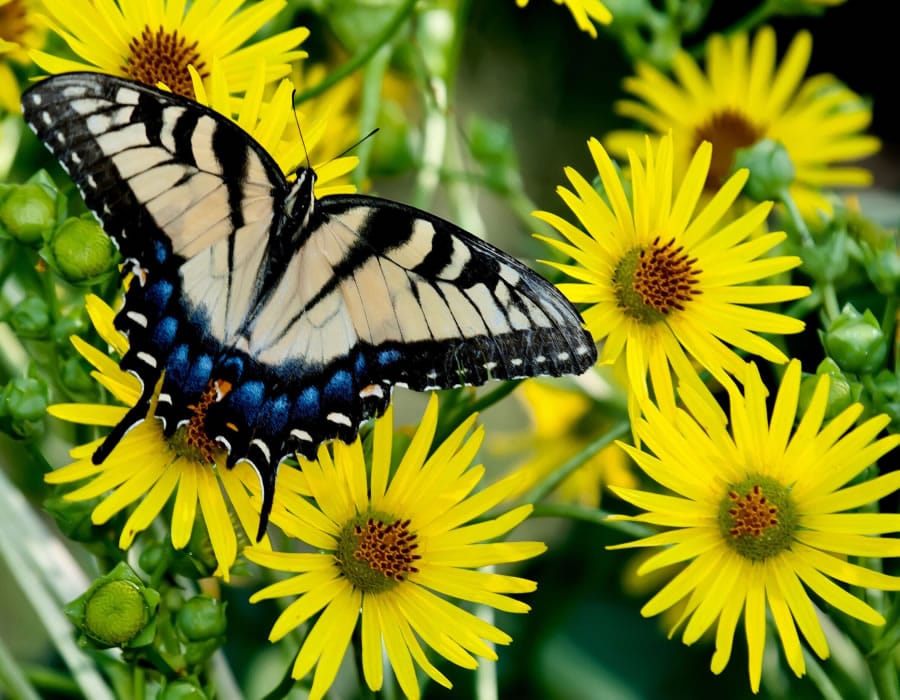When it comes to the backyard wildlife habitat, the cup plant has it all. To me, it is the flag-bearer perennial for bees, butterflies, and birds. It is a stalwart native in 34 states from Louisiana north to Canada crossing every border east. Alas, however, its size is quite imposing. It is big, bold and wonderful, and this is the time of the year it shines the most.
If you are getting interested but are not familiar with the cup plant, it is known botanically as Silphium perfoliatum — and cold hardy from zones 3 to 9 on the USDA Plant Hardiness Zone Map. It can grow tall, 4 to 10 feet, and colonize, so it is a plant for the back of the border. Here at the Coastal Georgia Botanical Gardens, ours are around 7 feet.
Though it may be hard to imagine, they can dwarf a brown-eyed Susan, Rudbeckia triloba, or a Brazilan sage, Salvia guaranitica, both also considered large plants and terrific partners for the cup plant. Close by, we have the pagoda flower Clerodendrum paniculatum, Java glory bower, Clerodendrum speciosissimum, as well as Baby Lace, Hydrangea paniculata — all of which do their part to bring in hummingbirds, bees, and butterflies.
You may be asking why it’s called a cup plant. This is one of the magical attributes of the plant. As the plant grows, it develops large square stems that give the impression of piercing the center of the large leaves. It has two leaves without petioles that are attached to the stem, forming a perfect cup to collect rainwater. Small birds like finches take advantage of this natural reservoir of water. These same birds also feed on the seeds as they mature and get ready to disperse.



